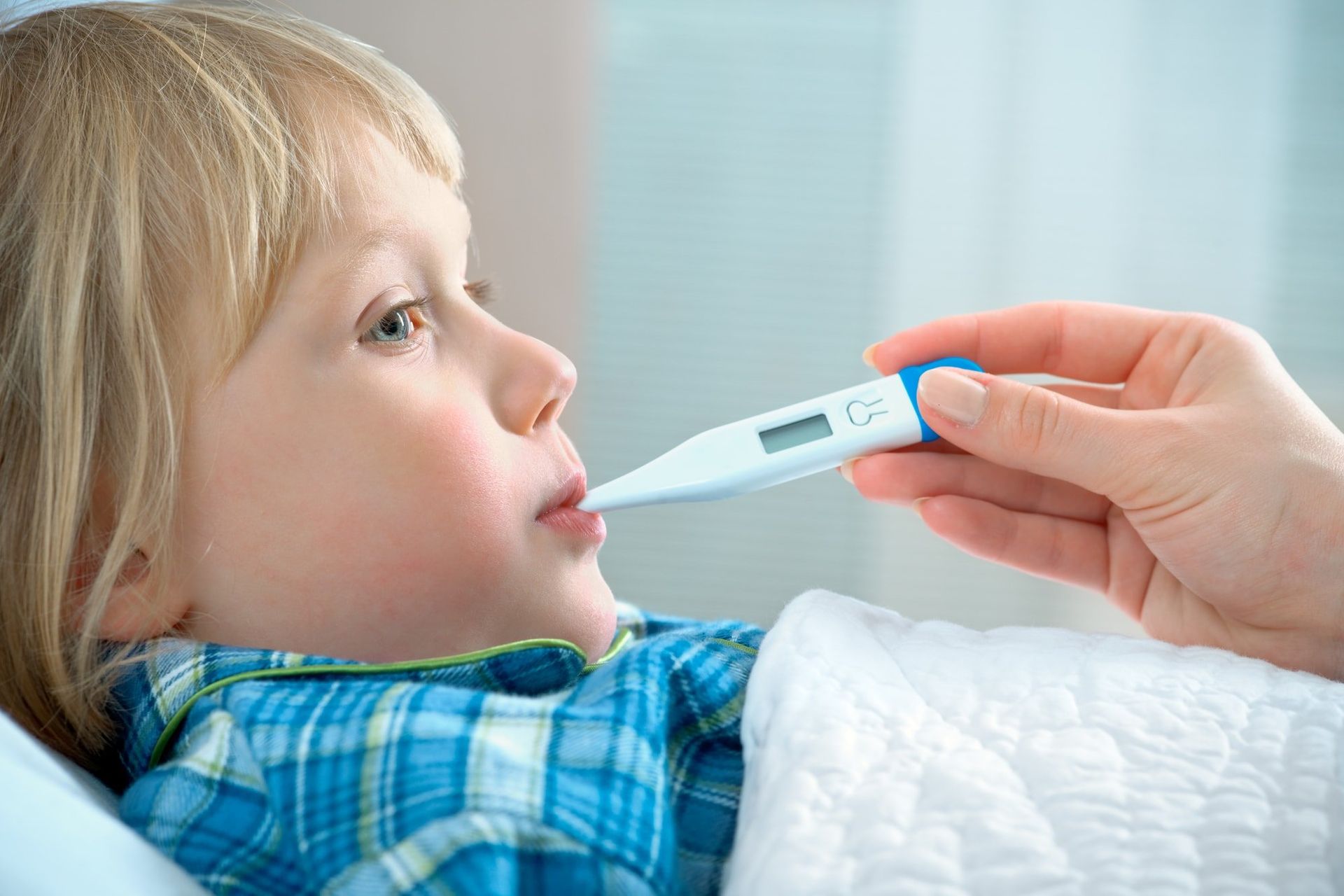Fever and Your Child
While it is important to look for the cause of a fever, the main purpose for treating it is to help your child feel better if he is uncomfortable or has pain.
A fever is usually a sign that the body is fighting an illness or infection. Fevers are generally harmless. In fact, they can be considered a good sign that your child’s immune system is working and the body is trying to heal itself.
Do Not Use Sponging to Reduce a Fever
It is not recommended that you use sponging to reduce your child’s fever. There is no information that shows that sponging or tepid baths improve your child’s discomfort associated with a fever or an illness. Cool or cold water can cause shivering and increase your child’s temperature. Also, never add rubbing alcohol to the water. Rubbing alcohol can be absorbed into the skin or inhaled, causing serious problems such as a coma.
About Fevers
A fever is a body temperature that is higher than normal. While the average normal body temperature is 98.6°F (37.0°C), a normal temperature range is between 97.5°F (36.4°C) and 99.5°F (37.5°C). Most pediatricians consider a temperature 100.4°F (38.0°C) or higher a sign of a fever (see Taking Your Child’s Temperature).
Signs and Symptoms of a Fever
If your child has a fever, she may feel warm, appear flushed, or sweat more than usual. She may also be thirstier than usual.
Some children feel fine when they have a fever. However, most will have symptoms of the illness that is causing the fever. Your child may have an earache, a sore throat, a rash, or a stomachache. These signs can provide important clues as to the cause of the fever.
When to Call the Doctor
The most important things you can do when your child has a fever are to improve your child’s comfort by making sure he drinks enough fluids to stay hydrated and to monitor for signs and symptoms of a serious illness. It is a good sign if your child plays and interacts with you after receiving medicine for discomfort.
Call your child’s doctor right away if your child has a fever and
- Looks very ill, is unusually drowsy, or is very fussy.
- Has been in a very hot place, such as an overheated car.
- Has other symptoms, such as a stiff neck, severe headache, severe sore throat, severe ear pain, breathing difficulty, an unexplained rash, or repeated vomiting or diarrhea.
- Has immune system problems, such as sickle cell disease or cancer, or is taking steroids or other medicines that could affect his immune system.
- Has had a seizure.
- Is younger than 3 months (12 weeks) and has a temperature of 100.4°F (38.0°C) or higher.
- Temperature rises above 104.0°F (40.0°C) repeatedly for a child of any age.
Also call your child’s doctor if
- Your child still “acts sick” once his fever is brought down.
- Your child seems to be getting worse.
- The fever persists for more than 24 hours in a child younger than 2 years.
- The fever persists for more than 3 days (72 hours) in a child 2 years or older.
Treating Your Child’s Fever
If your infant or child is older than 6 months and has a fever, she probably does not need to be treated for the fever unless she is uncomfortable. Watch her behavior. If she is drinking, eating, and sleeping normally and is able to play, you do not need to treat the fever. Instead, you should wait to see if the fever improves by itself.
What you can do
- Keep her room comfortably cool.
- Make sure that she is dressed in light clothing.
- Encourage her to drink fluids such as water, diluted juices, or a store-bought electrolyte solution.
- Be sure that she does not overexert herself.
- See How to Improve Your Child’s Comfort With Medicine.
Taking Your Child’s Temperature
While you often can tell if your child is warmer than usual by feeling his forehead, only a thermometer can tell how high the temperature is. Even if your child feels warmer than usual, you do not necessarily need to check his temperature unless he has the other signs of illness described earlier.
Always use a digital thermometer to check your child’s temperature (see Types of Digital Thermometers for more information, including guidance on what type of thermometer to use by age). Mercury thermometers should not be used. The AAP encourages parents to remove mercury thermometers from their homes to prevent accidental exposure and poisoning.
How to Use a Digital Multiuse Thermometer
Oral Temperature
Once your child is 4 or 5 years of age, you can take his temperature by mouth. Here is how to take an oral temperature.
- Clean the thermometer with lukewarm soapy water or rubbing alcohol. Rinse with cool water.
- Turn the thermometer on and place the tip under your child’s tongue toward the back of his mouth. Hold in place for about 1 minute, until you hear the “beep.” Check the digital reading.
- For a correct reading, wait at least 15 minutes after your child has had a hot or cold drink before putting the thermometer in his mouth.
How to Improve Your Child’s Comfort With Medicine
Acetaminophen and ibuprofen are safe and effective medicines if used as directed for improving your child’s comfort, and they may also decrease her temperature. A prescription is not needed to use them, and they are available at grocery stores and drugstores. However, keep this in mind.
- Acetaminophen should not be used for newborns and infants younger than 3 months unless recommended by your infant’s doctor.
- Ibuprofen should not be used for newborns and infants younger than 6 months. It should not be given to children who are vomiting constantly or are dehydrated.
- Do not use aspirin to treat your child’s fever or discomfort. Aspirin has been linked with side effects such as an upset stomach, intestinal bleeding, and Reye syndrome. Reye syndrome is a serious illness that affects the liver and brain.
- If your child is vomiting and cannot take anything by mouth, a rectal suppository may be needed. Acetaminophen comes in suppository form and can help reduce discomfort in a vomiting child.
- If your child is taking other medicines check the ingredients. If they include acetaminophen or ibuprofen, let your child’s doctor know.


